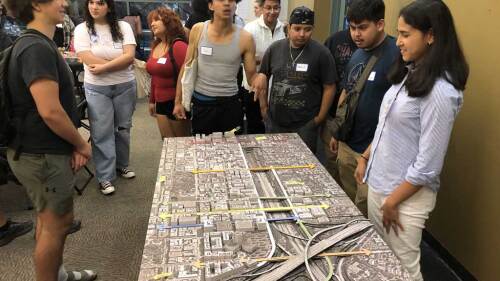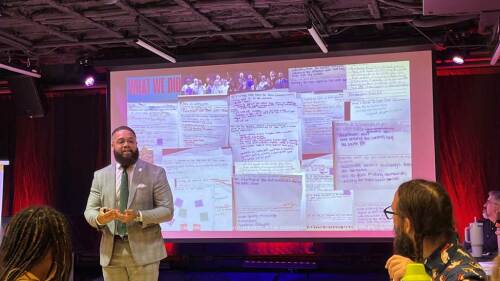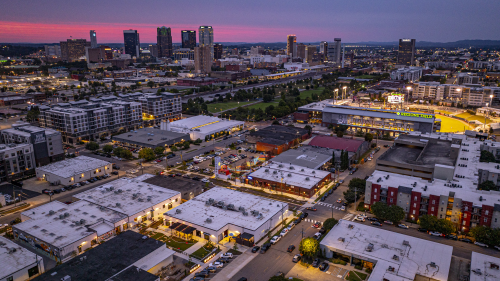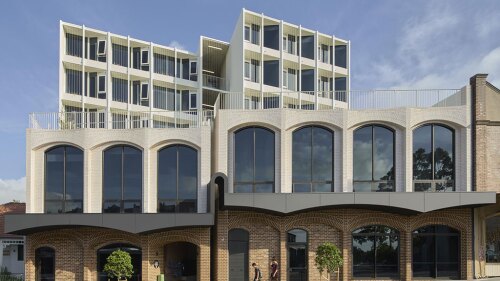In April 2025, ULI San Francisco announced a global call to “reimagine” San Francisco’s famed Market Street, soliciting ideas grounded in ecology, economy, and equality. The goal is to turn the often drab, blighted strip into a series of vibrant, interconnected communities. The potential makes serious consideration well worth pursuing.
The broad boulevard, originally laid out by surveyor Jasper O’Farrell in 1847, stretches diagonally for four miles through the heart of San Francisco, and downtown neighborhoods are identified by which side of the corridor they fall on. The street is 120 feet wide and serves as the axial spine connecting two competing urban grids. In the 1880s, Market Street welcomed cable cars, which were replaced by electric street cars in 1906 after the earthquake and fire. Street cars still run on Market Street, giving O’Farrell’s “grand promenade” its unique character. BART trains now run underground, providing public transit throughout the Bay Area.
Silicon Valley today represents the region’s major economic driver, and revamping Market Street as a showcase for the high-tech industry is one possible alternative. Another direction is to build more mixed-use structures, especially ones that include housing—a major, pressing issue in the city. Unlike past developments, however, any makeover of Market Street needs to focus on minimizing embodied carbon, embodied energy, and the carbon impact of construction. Progress should be weighed against both its environmental and social impacts.
Economist Kate Raworth explores this approach in “Doughnut Economics,” in which “progress,” as it is commonly understood, is measured against the nine recognized “planetary boundaries”—theoretical guardrails intended to keep human activity from harming the planet. This economic model challenges traditional models based on “ever-expanding” GDP, which continue to burden the planet with unsustainable growth and societal instability. The latest climate science data show that human activity over the past century has already crossed six of the nine boundaries, included climate change, freshwater use, biodiversity loss, and mass deforestation.
According to the World Health Organization, ignoring these facts won’t achieve what it defines as “societal health.” These are the environmental factors identified as the most significant influences in the physical, mental, and economic health of a community. These forces are outside any individual’s control yet directly impact and shape everyone’s daily lives and their ability to thrive. The U.S. Centers for Disease Control and Prevention (CDC) breaks down these key social determinants into five categories:
- Economic stability
- Education access and quality
- Health care access and quality
- Neighborhood and the built environment
- Social community context
Any proposed overhaul of Market Street should be judged against these domains as a starting point, and “progress” should not be defined as merely the proliferation of more construction, more gentrification, and more technology.
For several years, while living in the Hayes Valley neighborhood, I daily walked most of Market Street’s four miles to and from my office—first on Front Street and later to Montgomery in the financial district. Homelessness was an obvious problem along the way, and the cleanliness of the streets left much to be desired, not to mention the overabundance of adults-only stores. Despite these and other issues, I still greatly appreciated the mental reset of walking through the city, even when it was cold and overcast, as it often is in San Francisco.
Our firm, hb+a Architects, has proposed a revitalization of Market Street that explores all of these aspects and more—with minimal construction or disruption. The vision is startlingly simple: plant flowering trees on a street that has none and bring bright yellow foliage to an otherwise “gray” area of the city—renewing a vital and visceral connection to nature. The proposal would make Market Street entirely car-free and physically accessible to all, with public transit sharing the space with 40-foot (12.2 m) wide bike lanes and a yellow 25-foot (7.62 m) wide median for vendors, artisans, and street performers.
This plan aligns with ULI’s 2015 report, Building Healthy Places Toolkit, which identifies these factors, among others, in building a strong sense of community—instead of building yet more carbon-intensive monuments. A car-free Market Street in San Francisco would encourage residents to walk outside and interact, leading to a vibrant urban environment that celebrates inclusion and connection—and serves as a model for other cities around the country and the world.







